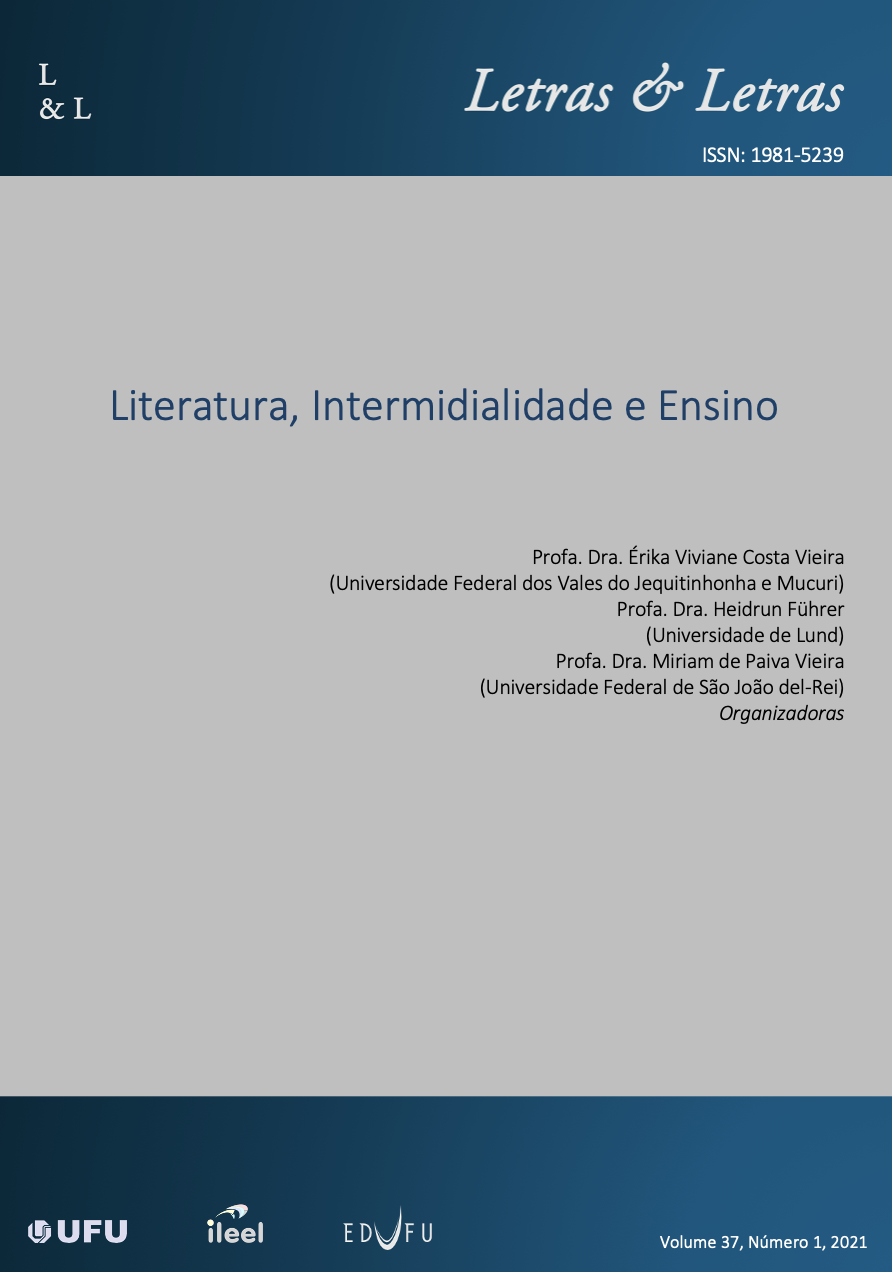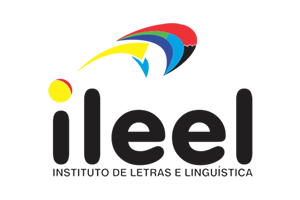Royal Shakespeare Company apresenta #dream40
Ensinando Shakespeare através das redes sociais
DOI:
https://doi.org/10.14393/LL63-v37n1-2021-12Palavras-chave:
Adaptação, Shakespeare, Intermidialidade, Redes sociais, #dream40Resumo
William Shakespeare é um dos autores mais importantes da língua inglesa e faz parte de inúmeros currículos escolares. Porém, ler Shakespeare em sala de aula pode ser um desafio para alunos e professores. Adaptações da literatura para as redes sociais, como é o caso de #dream40, uma produção da Royal Shakespeare Company, permanecem pouco exploradas em ambientes escolares. Neste artigo, essa produção é apresentada como uma possível aliada no esforço de aproximar o cânone inglês da realidade dos estudantes, tornando o Bardo mais atraente e acessível, já que se trata de uma produção que usa de mecânicas que fazem parte da rotina da maior parte dos estudantes nas plataformas de redes sociais, como a hashtag que aparece já no título dessa produção, além de ser intimamente alinhada a nosso paradigma contemporâneo de visão do mundo.
Downloads
Referências
BLAKE, N. F. The language of Shakespeare. Basingstoke: Macmillan, 1993. DOI: https://doi.org/10.1177/096394709300200206
CARTMELL, D. The Shakespeare on screen industry. In: CARTMELL, D.; WHELEHAN, I. (Ed.). Adaptations: from text to screen, screen to text. London: Routledge, 1999. p. 29-37.
COLEBROOK, C. Deleuzean Criticism. In: WOLFREYS, J. (Ed.) Introducing criticism at the 21st century. Edinburgh: Edinburgh University Press, 2002. p. 219-237.
DUNTON-DOWNER, L.; RIDING, A. Essential Shakespeare handbook. London: Dorling Kindersley, 2004.
ELLESTRÖM, L. Media transformation: the transfer of media characteristics among media. Houndmills: Palgrave Macmillan, 2014. DOI: https://doi.org/10.1057/9781137474254
FERRIS, S. P.; WILDER, H. A. Preface. In: FERRIS, S. P.; WILDER, H. A. (Ed.). The plugged-in professor: tips and techniques for teaching with social media. Oxford: Chandos Publishing, Woodhead Publishing, 2013. p. XV-XXIX.
GENETTE, G. Palimpsests: literature in the second degree. Lincoln: University of Nebraska, 1997.
GOOGLE+; ROYAL SHAKESPEARE COMPANY. Event programme. #dream40 – Midsummer night’s dreaming, 2013a. Available at: http://event.dream40.org/. Access on: 12 July 2015.
GOOGLE+; ROYAL SHAKESPEARE COMPANY. Timeline. #dream40 – Midsummer night’s dreaming, 2013b. Available at: http://dreaming.dream40.org/timeline. Access on: 12 July 2015.
HUTCHEON, L. A theory of adaptation. New York: Routledge, 2006. DOI: https://doi.org/10.4324/9780203957721
LANKSHEAR, C.; KNOBEL, M. New Literacies: everyday practices and social learning. 3. ed. Maidenhead: Open University Press, McGraw-Hill House, 2011.
MIDSUMMER Night's Dreaming | an Online Play – How It Works. Produção: Royal Shakespeare Company, The Brothers McLeod. [s.l], 2013. 1 video (1 min. 50 sec.). Available at: https://www.youtube.com/watch?v=m0IXh_ICbek. Access on: 9 Sept. 2014.
MURRAY, J. H. Hamlet on the Holodeck: the future of narrative in Cyberspace. Cambridge, MA: MIT Press, 1997.
RAJEWSKY, I. O. Intermediality, intertextuality, and remediation: a literary perspective on intermediality. Intermédialités, v. 6, p. 43-64, 2005. DOI: https://doi.org/10.7202/1005505ar
ROGERS, K. Meme. In: ENCYCLOPEDIA Britannica online, 28 Feb. 2014. Available at: https://www.britannica.com/topic/meme. Access on: 29 June 2015.
SPITERI, G. Shakespeare matters: A little knowledge is a dangerous thing. London: Anova, 2009.
STAM, R. Adaptation and the French New Wave: A study in ambivalence. Interfaces v. 34, p. 177-197, 2012-2013. Available at: https://www.holycross.edu/sites/default/files/files/english/geracht/interfaces/adaptation.pdf. Access on: 29 Jun. 2015.
UGLOW, T. A Prologue to #Dream40. #dream40 – Midsummer night’s dreaming, 11 June 2013. Available at: http://about.dream40.org/. Access on: 6 Sept. 2014.
Downloads
Publicado
Edição
Seção
Licença
Autores que publicam nesta revista concordam com os seguintes termos:
Autores mantêm os direitos autorais e concedem à revista o direito de primeira publicação, com o trabalho simultaneamente licenciado sob a Creative Commons Attribution License que permitindo o compartilhamento do trabalho com reconhecimento da autoria do trabalho e publicação inicial nesta revista.
Autores têm autorização para assumir contratos adicionais separadamente, para distribuição não-exclusiva da versão do trabalho publicada nesta revista (ex.: publicar em repositório institucional ou como capítulo de livro), com reconhecimento de autoria e publicação inicial nesta revista.










